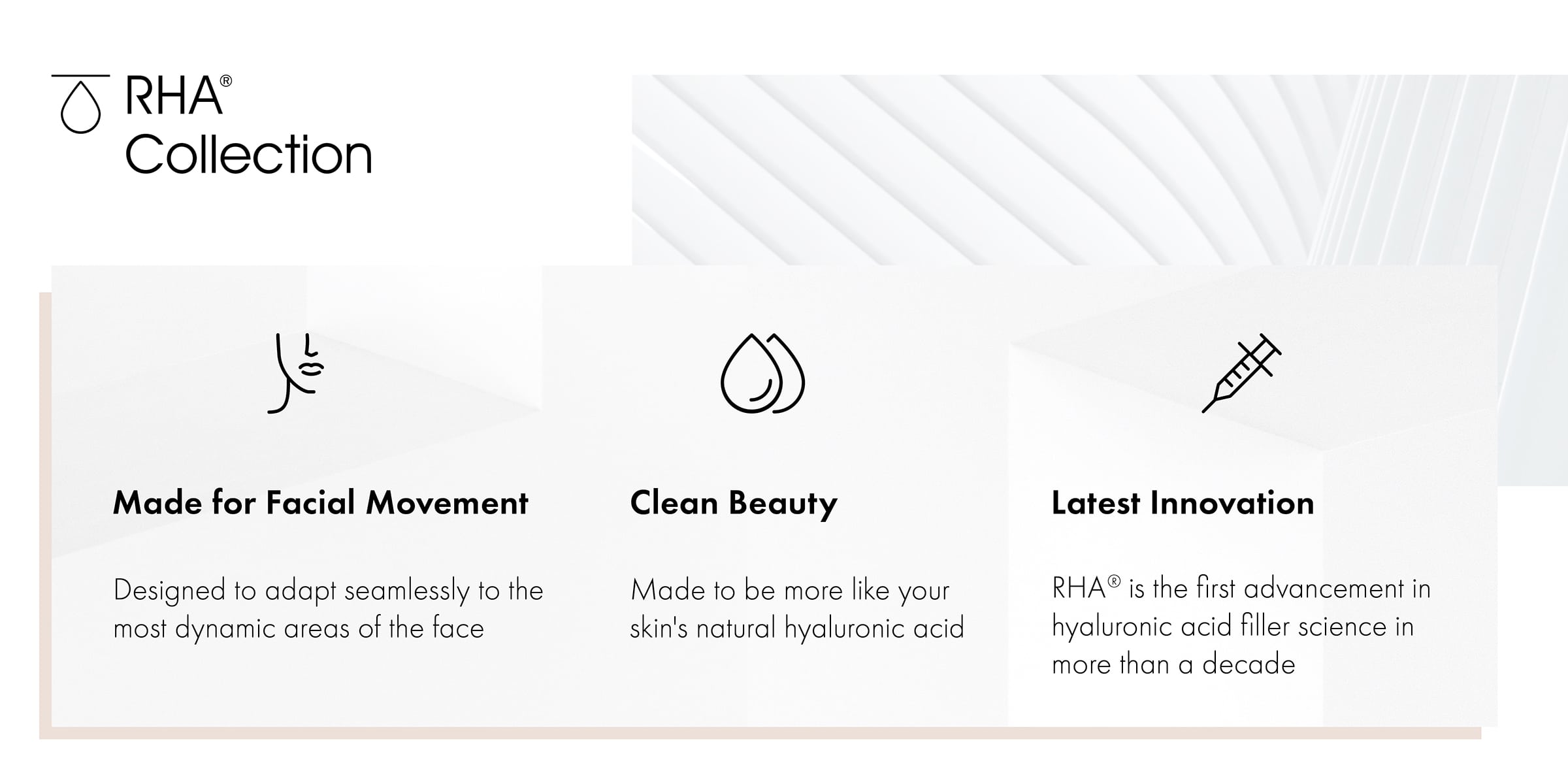
We are one of the first practices to offer the RHA® Collection, the first hyaluronic acid fillers designed for dynamic wrinkles and folds.
What is the RHA® Collection of Filler?
RHA stands for resilient hyaluronic acid, and this is the latest advance in dermal filler science. These fillers are designed for the dynamics of our facial movements, so the volume they provide looks more natural and adapts to movement without breaking down as quickly.
There are currently three available Teoxane RHA dermal fillers, RHA 2, RHA 3, and RHA 4. These fillers all received FDA approval in late 2017. Since then, Dr. Bucay has researched these fillers and has recently added them for our patients from San Antonio and the surrounding areas.

Which RHA® Fillers Are Carried At Our Office?
We are currently offering RHA 2, 3, and 4. Contact our office today to be one of the first to receive this new treatment!
What issues can RHA fillers address?
All three RHA dermal fillers closely resemble the native hyaluronic acid present in our skin, so they adapt quite well to our tissue when injected. This allows exceptional results for patients at every angle all the way through the entire length of movement. In other words, they return volume and erase lines, but you don’t notice them when you make normal facial movements.
- RHA 2 works best on nasolabial folds, the colloquial “smile lines” that run from the nose down to the corners of the mouth.
- RHA 3 can be used for nasolabial folds and the commissures, the corners of the mouth.
- RHA 4 is most appropriate for deeper nasolabial folds and for deeper lines in the lower face and jawline. RHA 4 can also be used off-label in the midface to add volume to sunken cheeks.
How are RHA fillers different from other dermal fillers?
Anyone who follows the aesthetic world at all knows about Juvéderm and Restylane. These were the original two dermal fillers, first approved by the FDA back in 2006. They have been enormously popular around the world, and each filler has expanded into an entire line. We offer all of these at Bucay Center for Dermatology and Aesthetics.
You can call these “first generation” fillers. All of these fillers are made from hyaluronic acid, a naturally occurring substance in the human body (and most other mammals) that is responsible for hydrating, plumping, and firming the skin. Hyaluronic acid does this by binding with nearby water molecules.
These fillers have provided and continue to provide great results. But for some situations and some individual patients, they don’t respond as well when the patient’s face moves with expressions and the like. That’s because hyaluronic acid breaks down rapidly and is metabolized in about 48 hours. To prevent this from happening, with first-generation dermal fillers the HA is crosslinked with suspended chemical proteins. These proteins make the HA in first-generation dermal fillers not as malleable with facial movements.
That’s where this second generation of hyaluronic acid dermal fillers is different. These new fillers have fewer chemical modifications and crosslinking in longer chains of HA. This makes resilient hyaluronic acid fillers closer to the natural hyaluronic acid that is found throughout the human body in their flexibility in usage, natural-looking results, and longevity of results. Basically, RHA fillers are closer to natural hyaluronic acid, so they are undetectable regardless of facial movements. That’s the improvement RHA fillers makeover the first-generation HA fillers.

When will I see my results after injections of an RHA filler?
Your results are instant, just as with the first-generation dermal fillers. The hyaluronic acid in these fillers instantly binds with nearby water molecules adding volume. The difference is how these fillers respond to your facial muscle movements.
How long will my results last with RHA dermal fillers?
These new RHA fillers provide natural-looking results for up to 15 months.
Are these RHA fillers safe?
As with all of the Juvéderm and Restylane line Dr. Bucay offers, these new hyaluronic acid fillers are safe. Hyaluronic acid is a naturally occurring substance in the human body. Its job is to hydrate and plump the skin. These filters simply add hyaluronic acid when injected. The usual side effects are the same as with fillers like Restylane. There can be some slight swelling and redness at the injection sites. As with any hyaluronic acid filler, if a lump forms or if you don’t like the way the filler looks, Dr. Bucay can inject an enzyme, hyaluronidase, that instantly neutralizes the hyaluronic acid and dissolves the filler.
Before and After RHA® Collection by Teoxane
Schedule A Consultation
Experience the designer difference today. Contact our La Casita office at 210.692.3000 or our Sonterra office at 210.370.9995 to schedule your appointment.

